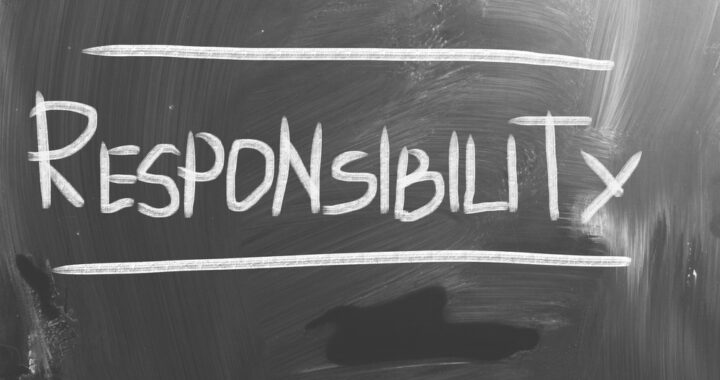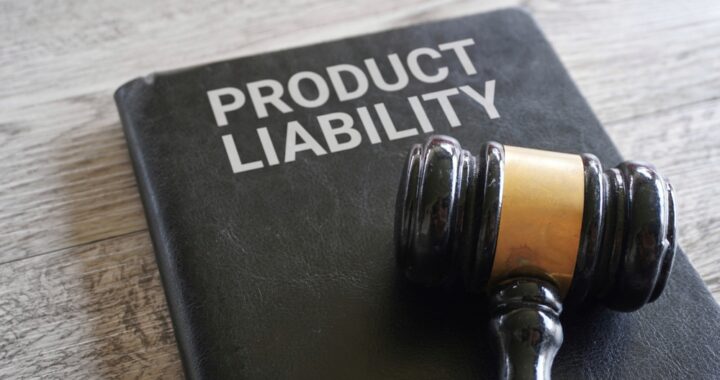When it comes to product liability law, one important doctrine that will always come up is the economic loss rule. The economic loss rule, oftentimes going by its acronym ELR, lives and breathes in the realm of product liability law.
Does the economic loss rule extend to a manufacturer’s distributor for a duty to warn when the product is NOT defective? A recent opinion out of the Eleventh Circuit Court of Appeals, NBIS Construction & Transport Ins. Services v. Liebherr-America, Inc., 2024 WL 861257 (11th Cir. 2024), was confronted with this question, including whether the economic loss rule should even extend to a distributor of a product, and certified the following to Florida’s Supreme Court to answer: “Whether, under Florida law, the economic loss rule applies to negligence claims against a distributor of a product, stipulated to be non-defective, for the failureto alert a product owner of a known danger, when the only damages claimed are to the product itself?” NBIS, supra, at *8.
This presents an interesting issue and question of utmost importance for Florida’s Supreme Court to address. How far does the economic loss rule extend in the product liability context? Does it extent to products that are not claimed to be defective? Can the economic loss rule be circumvented by couching a claim differently? While reading the below, consider these questions and issues, particularly if you are representing a plaintiff in a product liability-type of action, or defending a party in a product liability-type action. The Eleventh Circuit’s consideration of these issues may impact how you frame a claim or defense or willingness to stipulate as to a product defect.
A. Background of NBIS Construction
In NBIS Construction, a crane company purchased a crane from a broker. Per the agreement, a manufacturer’s trained technician, through its distributor, was to provide onsite commissioning and train the crane company’s personnel per the operating manual so operators and employees could safely operate the crane. The distributor sent a representative that provided forty hours of training. However, the distributor typically provides about eighty hours of training. The crane company claimed the trainer did not inform it of certain issues/risks and skipped other training issues. Later, as the crane company was operating the crane, the crane collapsed due to improper manipulation causing damage to itself. Notably, prior to the collapse, another collapse occurred in Japan due to the same improper manipulation issue. This prompted the manufacturer and distributor to update product safety information and issue a safety bulletin relative to the improper manipulation. Unfortunately, due to a delay in the issuance of the safety bulletin, the crane company did not get the safety bulletin until after the collapse.
The plaintiff (which was the managing general agent of the insurer of the crane company) sued the manufacturer’s distributor for negligence, negligent training, and a violation of Florida’s Deceptive and Unfair Trade Practices Act. The issue before the Eleventh Circuit was the negligence claim. The plaintiff claimed the manufacturer’s distributor was “negligent for failing to properly train [the crane company’s] employees in usage of the crane and for failing to send the product safety bulletin in a timely manner.” NBIS Construction, supra, at *3. The distributor argued the economic loss rule precluded recovery because the distributor had no duty to protect the crane company from purely economic harms. The parties stipulated the crane was NOT defective (as the collapse occurred due to improper manipulation and not a specific defect). After a bench trial, the trial court ruled in favor of the plaintiff and rejected the distributor’s economic loss rule defense. The trial court held that since the crane was not defective, the plaintiff’s action was not one grounded in products liability law, but one based on negligent services where the economic loss rule does not apply. The manufacturer appealed.
B. Florida Economic Loss Rule – Product Liability Context
“[T]he economic loss rule is a judicially created doctrine that sets forth the circumstances under which a tort action is prohibited if the only damages suffered are economic losses.” It developed in large part to “protect manufacturers from liability for economic damages caused by a defective product beyond those damages provided for by warranty law.”
***
Thus, as the Florida Supreme Court later explained, “[i]n exchange for eliminating the privity requirements of warranty law and expanding the tort liability for manufacturers of defective products which cause personal injury, [it] expressly limited tort liability with respect to defectiveproducts to injury caused to persons or damage caused to property other than the defective
product itself.”
***
The Florida Supreme Court also refused to apply the rule in cases concerning professional malpractice, fraudulent inducement, negligentmisrepresentation, and statutory causes of action. Then, in Tiara, the Florida Supreme Court receded from its “prior rulings to the extent that they haveapplied the economic loss rule to cases other than products liability,” and returned “the economic loss rule to its origin in products liability.” Thisremains the state of the doctrine in Florida today.
NBIS Construction, supra, at *4-5 (internal citations omitted).
C. Inherently Dangerous Products – Duty to Warn and Applicability of Economic Loss Rule
The distributor argued the economic loss rule applies because it is a products liability case irrespective of the fact that the parties agreed the crane was not defective. The distributor contended the plaintiff’s negligence claims based on the failure to adequately train or promptly send the safety bulletin are duty to warn claims, where the economic loss rule does apply. In this regard, the distributor maintained that Florida law requires a distributor to warn of potential dangers with a product:
With respect to “inherently dangerous” products, the Florida Supreme Court explained the duty this way:
When a distributor of an inherently dangerous commodity places it in the channels of trade, then by the very nature of hisbusiness he assumes the duty of conveying to those who might use the product a fair and adequate warning of its dangerouspotentialities to the end that the user by the exercise of reasonable care on his own part shall have a fair and adequate notice ofthe possible consequences of use or even misuse.
And long ago, the Florida Supreme Court said that “a crane in operation is inherently dangerous.” The Florida Supreme Court has also found that a “amanufacturer has a duty to warn of dangerous contents in its product which could damage or injure even when the product is not used for its intended purpose.”
Florida’s intermediate appellate courts have applied the duty to warn in various cases, including those involving goods with “dangerous propensities.”
Further, Florida courts have described cases concerning this duty to warn as “products liability action[s] … based on negligence.”
Additionally, under Florida’s strict products liability law, a product may be defective because of an inadequate warning.
For an example of the economic loss rule applied to a failure to warn claim, [the distributor] directs us to the Florida Supreme Court’s decision inAirport Rent-A-Car, Inc. v. Prevost Car, Inc., 660 So. 2d 628 (Fla. 1995), receded from on other grounds by Tiara, 110 So. 3d 399. There, wecertified three questions to the Florida Supreme Court, including one asking whether, “under Florida law, a cause of action may exist outside thebar of the economic loss rule where the plaintiffs allege a duty to warn which arose from facts which came to the knowledge of the companyafter the manufacturing process and after the contract.” Id. at 629. The Florida Supreme Court answered no: the “failure to warn, without therequisite harm [to person or other property], will not circumvent the economic loss rule” in such circumstances. Id. at 632. There is anotherexample too. In Florida Power & Light, one of FPL’s allegations was that Westinghouse “failed to warn of potential problems” with respect to thesteam generators at issue. 510 So. 2d at 900. And the Florida Supreme Court, of course, concluded that the economic loss rule applied to bar FPL’s claim. Id. at 902.
NBIS Construction, supra, at *5-6 (internal citations omitted).
D. Negligent Services
The plaintiff stated that the distributor got it wrong. This case is not a products liability action demonstrated by the parties’ stipulation that the crane was not defective. Rather, the case is a negligent services case in which the economic loss rule does not apply.
E. Certification to Florida Supreme Court
Hmm. Does the economic loss rule apply to the plaintiff’s claims against the distributor? The Eleventh Circuit is not so sure, hence the certification to Florida’s Supreme Court to address:
We find Florida law unclear as to the economic loss rule’s applicability here. On one hand, we see merit in [the distributor’s] argument that[plaintiff’s] theories of negligence are like the failure to warn theories found in products liability law. If [the distributor] could not be held liable foreconomic loss resulting from an inadequate training manual under Florida’s economic loss rule, then it makes sense for that rule to also shield [the distributor] from liability for economic loss arising from its failure to adequately train [the crane company] and to promptly send the product safetybulletin.
On the other hand, [the plaintiff] is correct that cases concerning product defects are at the heart of Florida’s economic loss rule. Indeed, “from theoutset, the focus of the economic loss rule was directed to damages resulting from defects in the product itself.” Even the case on which [the distributor] relies, Airport Rent-A-Car, concerned a defective product. And while [the distributor] is a distributor of the crane at issue, we wonderhow applying Florida’s economic loss rule in this case might affect Florida’s tort law with respect to defendants who are not in the distributive chain. Inother words, if a defendant, not in the distributive chain, negligently trained [the crane company] and the collapse of the crane’s boom resulted, wouldthe economic loss rule still apply? If the answer is yes, then that would appear to be an extension of Florida’s economic loss rule in tension with Tiaraand Am. Aviation. And if the answer is no, then it is worth considering why it makes sense to exempt [the distributor] from liability solely because it is a distributor of the product at issue.
NBIS Construction, supra, at *7 (internal citations omitted).
Please contact David Adelstein at dadelstein@gmail.com or (954) 361-4720 if you have questions or would like more information regarding this article. You can follow David Adelstein on Twitter @DavidAdelstein1.






 Can a
Can a 

